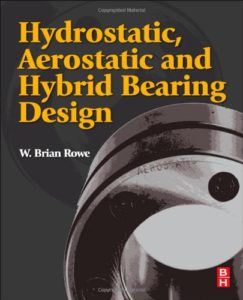Hydrostatic Aerostatic and Hybrid Bearing Design
Hydrostatic Aerostatic and Hybrid Bearing Design
Hydrostatic Aerostatic and Hybrid Bearing Design afford a simple and convenient solution to many bearing problems experienced with particular machines. Sometimes, the best method of achieving a specified performance is to use a hydrostatic bearing, an aerostatic bearing, or a hybrid bearing. However, the designer is not always experienced in hydrostatic and aerostatic lubrication, and has difficulty obtaining authoritative guidance presented in a simple manner.
Aimed at both experienced designers and those new to bearing design, Hydrostatic, Aerostatic and Hybrid Bearing Design provides engineers, tribologists and students with a one-stop source of inspiration, information and critical considerations for bearing design success.
You can also Read Bearing Design in Machinery: Engineering Tribology and Lubrication
Content:
- Front Matter,
![Hydrostatic Aerostatic and Hybrid Bearing Design]()
- Copyright,
- Preface
- Usual Meaning of Symbols,
- Application,
- Basic Flow Theory
- Power, Temperature Rise, and Shape Optimization,
- Pads: Area and Flow Shape Factors ( and ),
- Flow Control and Restrictors,
- Basis of Design Procedures,
- Plane Hydrostatic and Aerostatic Bearings,
- Partial Journal Bearings,
- Recessed Hydrostatic Journal Bearings,
- Plain Journal Bearings,
- The Yates Bearing,
- Conical Journal Bearings,
- Spherical Bearings,
- Dynamics,
- Experimental Methods and Testing,
- Index
Structured, easy to follow design procedures put theory into practice and provide step-by-step blueprints for solving your own design problems.Covers a wide selection of bearing shapes, offering a range and depth of information on hydrostatic, hybrid and aerostatic bearings not found elsewhere.Includes critical data on optimum performance, with design specifics from load and film stiffness data to pressure ratio considerations that are essential to make your design a success.
Theory is kept to an elementary level in the design sections and the book offers a useful introduction for engineers who have left academic study behind. A basic theory chapter refreshes relevant principles of fluids. The book is also useful to students of engineering design and lubrication.


Comments are closed.